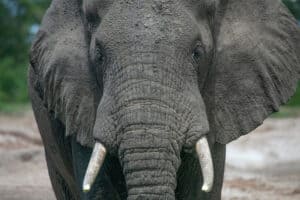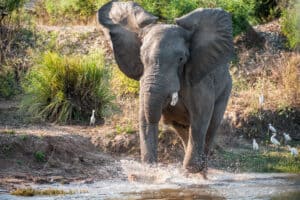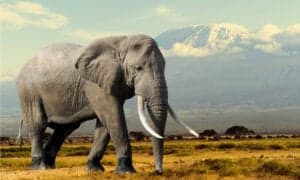Continue reading for our analysis...
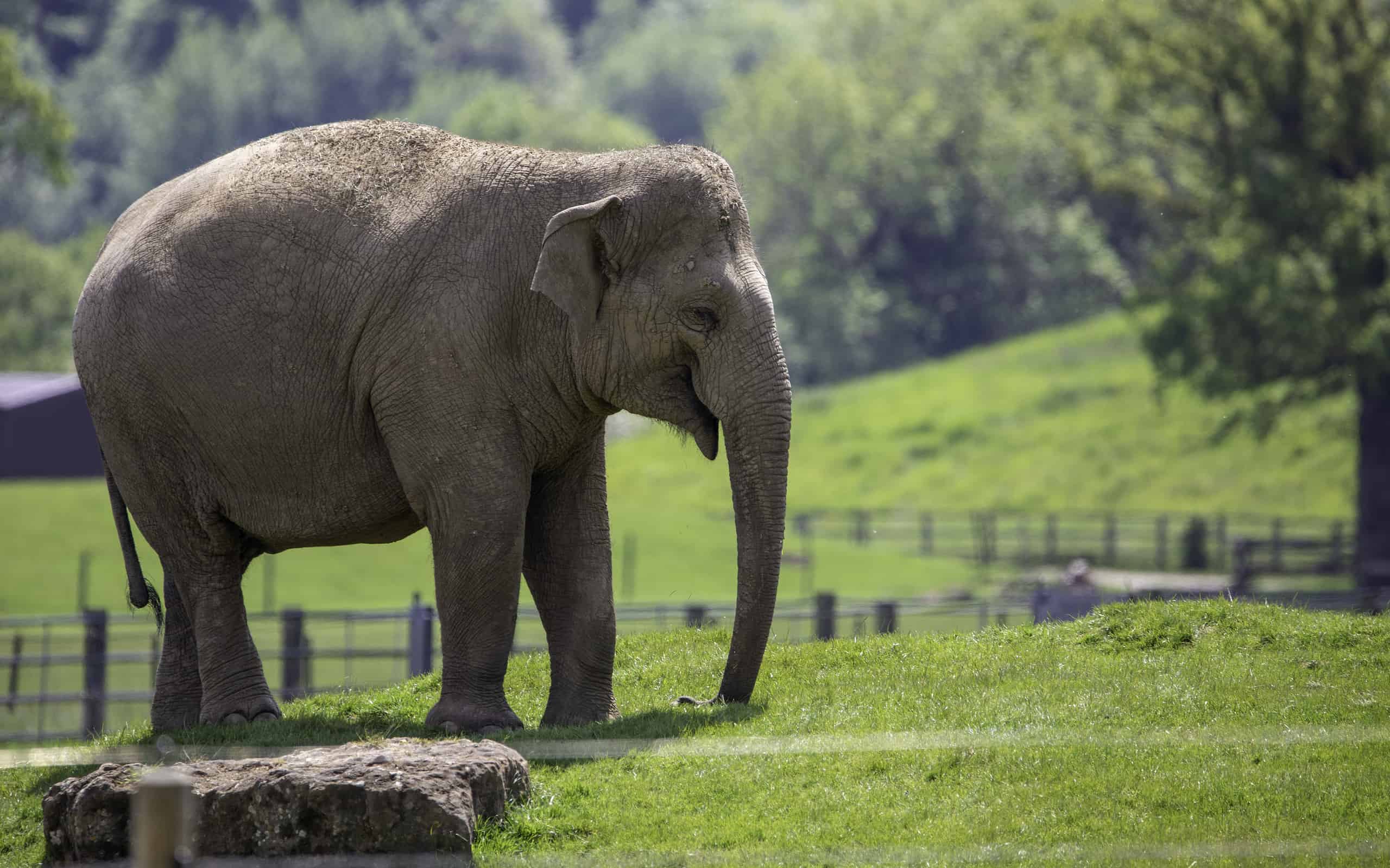
Going on a tour in the wild is one of the most exciting things you can do! It is unlike any experience you’ve ever had. Sure, taking a trip to the local zoo is exciting. However, there is something about being face to face with an animal in its natural environment with no bars that is exotic. Let’s see what happens in the video above!
Elephant Sighting in Zimbabwe
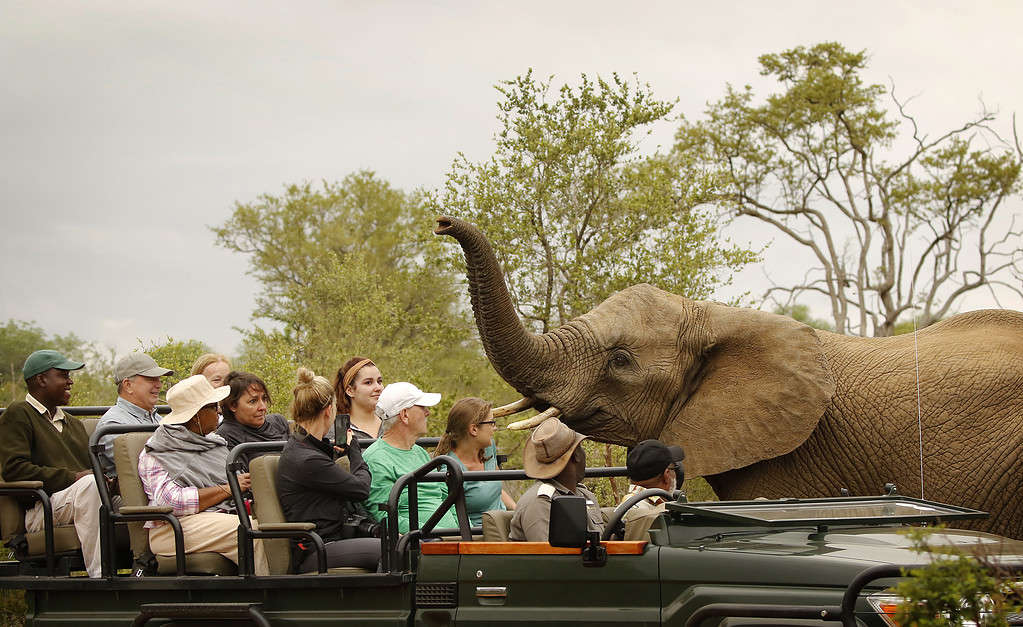
Elephants are the largest land animals.
©jacobeukman/iStock via Getty Images
This YouTube video at the top of this blog post takes us to Zimbabwe. This video was filmed and shared by the Snakes in Zimbabwe YouTube page. In addition to this channel providing videos on snakes, we also see videos on beautiful birds, elephants, monitor lizards, and crocodiles.
As the video starts, we see that this couple is most likely on a tour in Zimbabwe. The great thing about safari and tours in the wild is that you don’t necessarily only see animals when you’re in a vehicle driving around. After all, all the land is the natural habitat that these wild animals reside in.
So, while this couple eats lunch outside, we suddenly see a massive elephant stroll by and stand in front of the tent. This elephant couldn’t have been more than 10 feet away! Notice how this couple still is why the elephant forages for food on the ground. They don’t want to spook this animal in any way. This is a great thing to remember when seeing animals in the wild. Sit back and relax, and watch them in their natural environment. We have no reason to spook them.
What Animals Live in Zimbabwe?
Zimbabwe is a small South African country with approximately 151,000 square miles. Zimbabwe is home to over 350 species of mammals, over 500 bird species, and about 131 species of fish.
Some of the most famous animals we will see are the black rhinoceros, African wild dog, cheetah, giraffe, leopard, lion, hippo, and elephant. However, let’s look at one animal that may not be as well known to us, the caracal.
Caracal (Caracal caracal) Facts
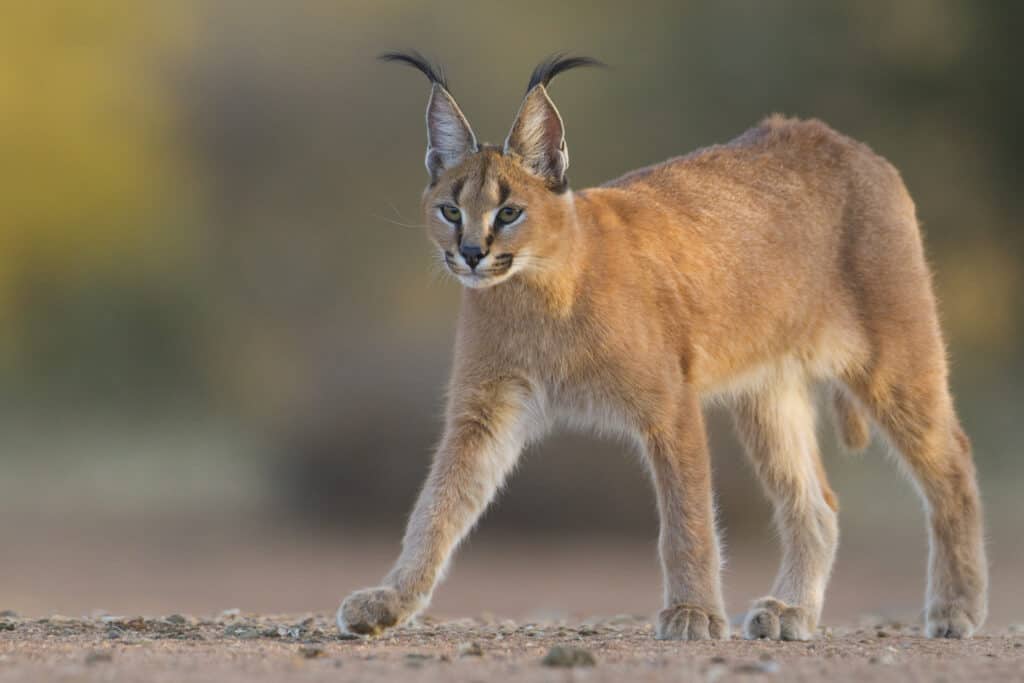
Caracals can live up to 15 years in the wild.
©iStock.com/StuPorts
The caracal of the family Felidae resides in both Africa and Asia. Caracals are small mammals that weigh anywhere from 24-40 pounds and reach 2-3 feet in length.
Though small, these animals are pretty fast and can run up to 50 miles per hour. As such, they can catch their prey with great ease. As carnivores, they prey on hares, mice, and even antelope.
They are easy prey that makes for a good meal for many animals, such as hyenas and lions. However, they have to be caught first!
Thank you for reading! Have some feedback for us? Contact the AZ Animals editorial team.




